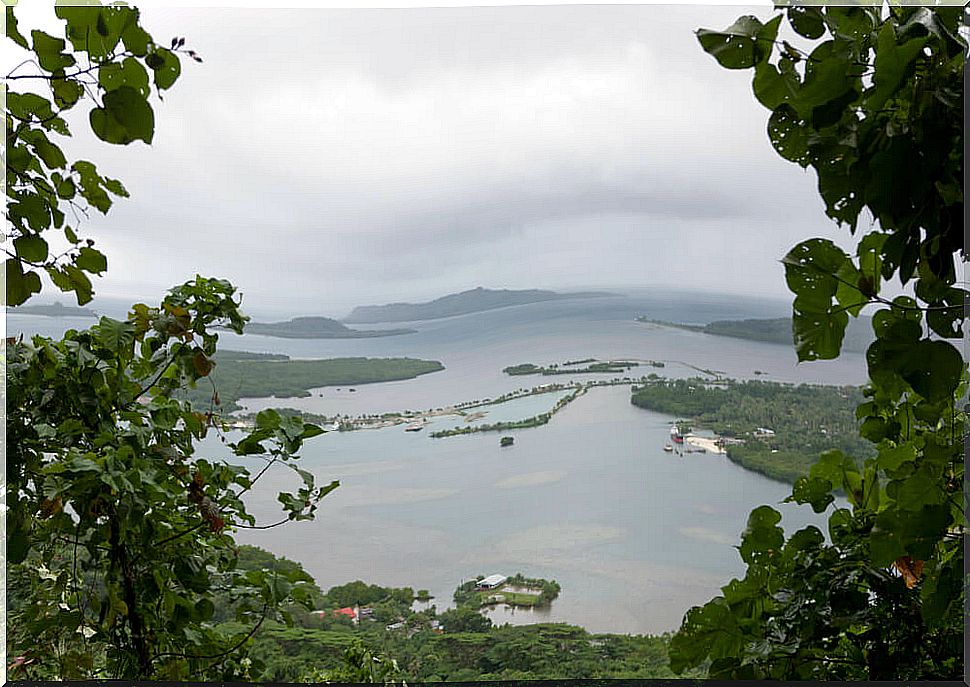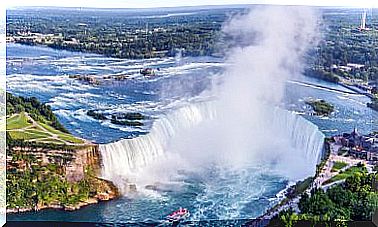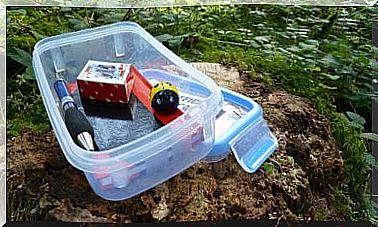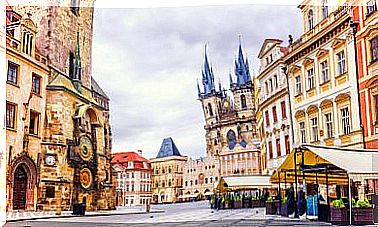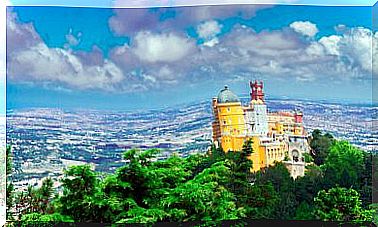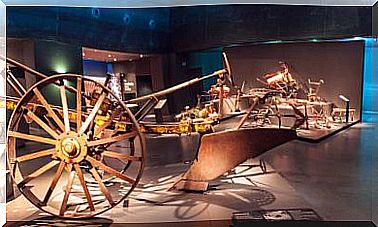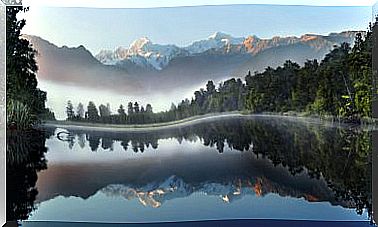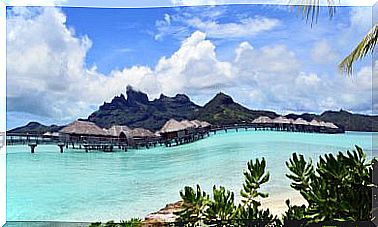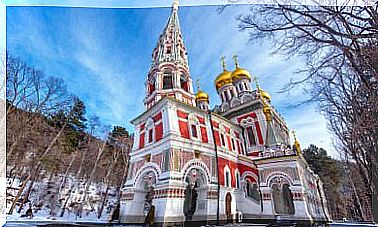What Are The Tourist Attractions Of Micronesia?
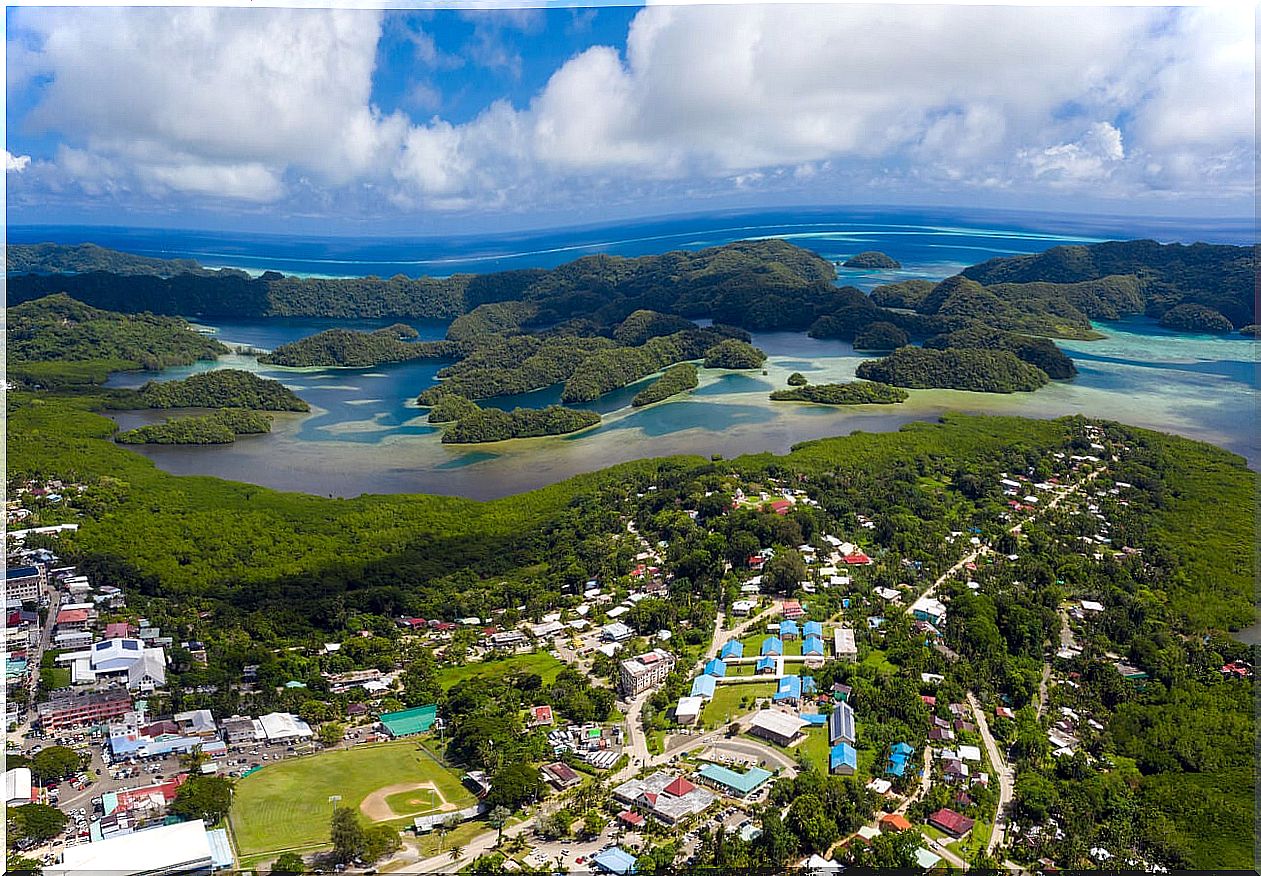
The Federated States of Micronesia is an ideal destination for those looking to get in touch with an extraordinary culture. Despite not having a great infrastructure, it has idyllic beaches, shipwrecks, fish of all colors and unique archaeological sites, among other attractions.
The Federated States of Micronesia are located in the Caroline Islands of the Pacific Ocean , approximately 500 kilometers from the Philippines and Indonesia. They are made up of four states: Yap, Chuuk, Pohnpei and Kosrae. These occupy an area of 702 square kilometers and cover 607 islands.
The Federated States of Micronesia are often referred to as Micronesia only. This creates confusion, as these are found in the geographic region of Micronesia, along with other countries such as New Guinea, Guam, Mariana Islands, Nauru, Marshall Islands, Palau, and the Philippines.
Among the cultural traits, the expressly matriarchal clan systems stand out. They are characterized by large families that even geographically include several islands, and where the deep value of traditions is lived.
The Federated States of Micronesia
Each of the states that make up the Federated States of Micronesia has its own traditions and culture. It is precisely this culture and its shared history that serves as the glue to keep the four united states in one country.
The State of Yap, located in the west of the country, is the one that most preserves its current ancestral traditions. That is why it is fascinating to visit its towns to come into contact with an amazing and unique culture.
For its part, the State of Chuuk is a paradise for divers due to the multitude of shipwrecks from World War II that are housed there. In addition, it has crystalline waters in which a large number of corals and multicolored fish of many species proliferate.
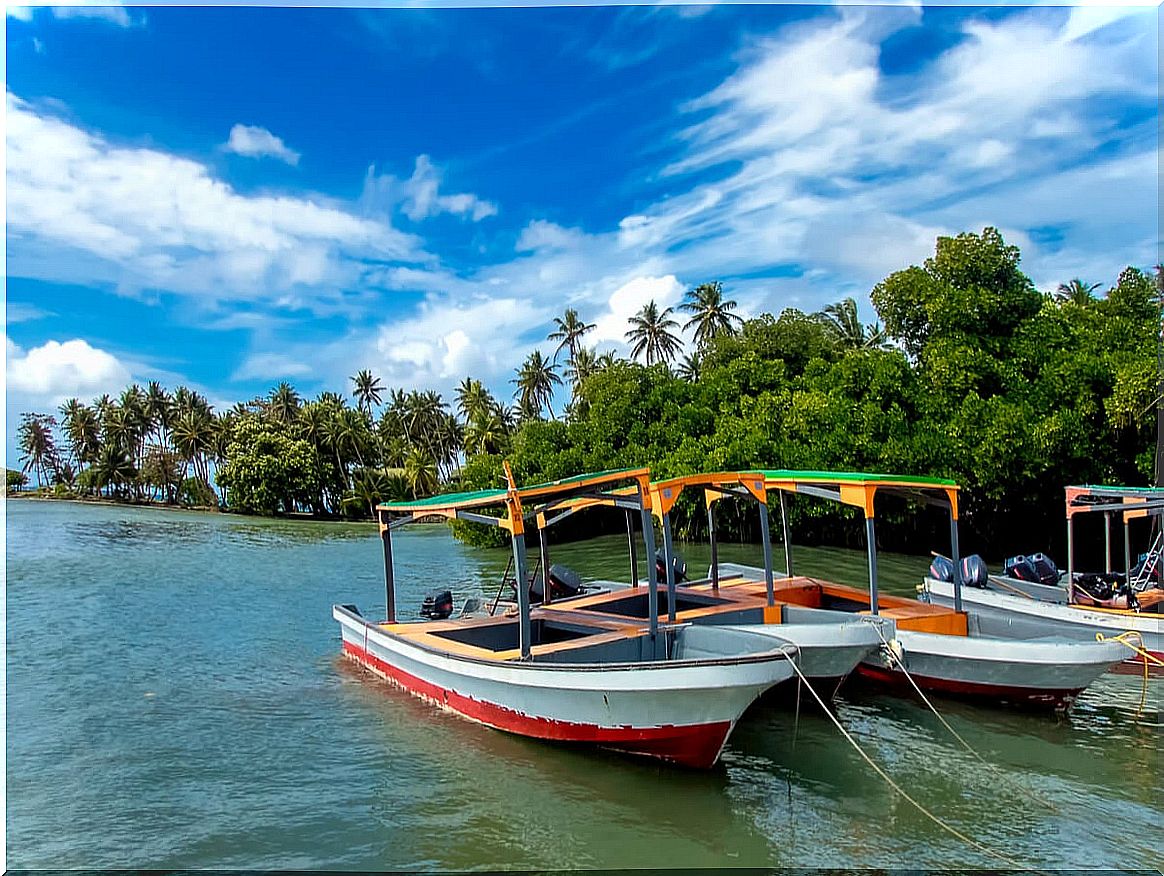
Meanwhile, the State of Pohnpei is home to the largest island in the country and is where its capital, Palikir, is located. Here the mountains, rivers, waterfalls and a jungle area abound with rains that nourish the fauna and flora of the place.
Finally, in the State of Kosrae there are many paradisiacal beaches ; in several of them all kinds of water sports are practiced. It has an extensive area of mangroves and archaeological ruins unparalleled in the world.
Whose States are they!
The States of Micronesia were initially inhabited by Polynesians, more than 4000 years ago. They flourished and lived in peace until the arrival of European explorers. First it was the Portuguese, who were actually searching the islands of Indonesia for their spices.
Later, the Spanish appropriated the islands, around 1526, and later they would baptize them as the Caroline Islands. Later, Germany invaded the islands in 1899, which generated moments of tension, until Spain agreed to sell the place to the German country.
Then it would be the Japanese who would take the islands from the Germans in 1914, at the beginning of the First World War. Finally, the United States seized the islands from Japan in 1947, during World War II, and still maintains its dominion over them today.
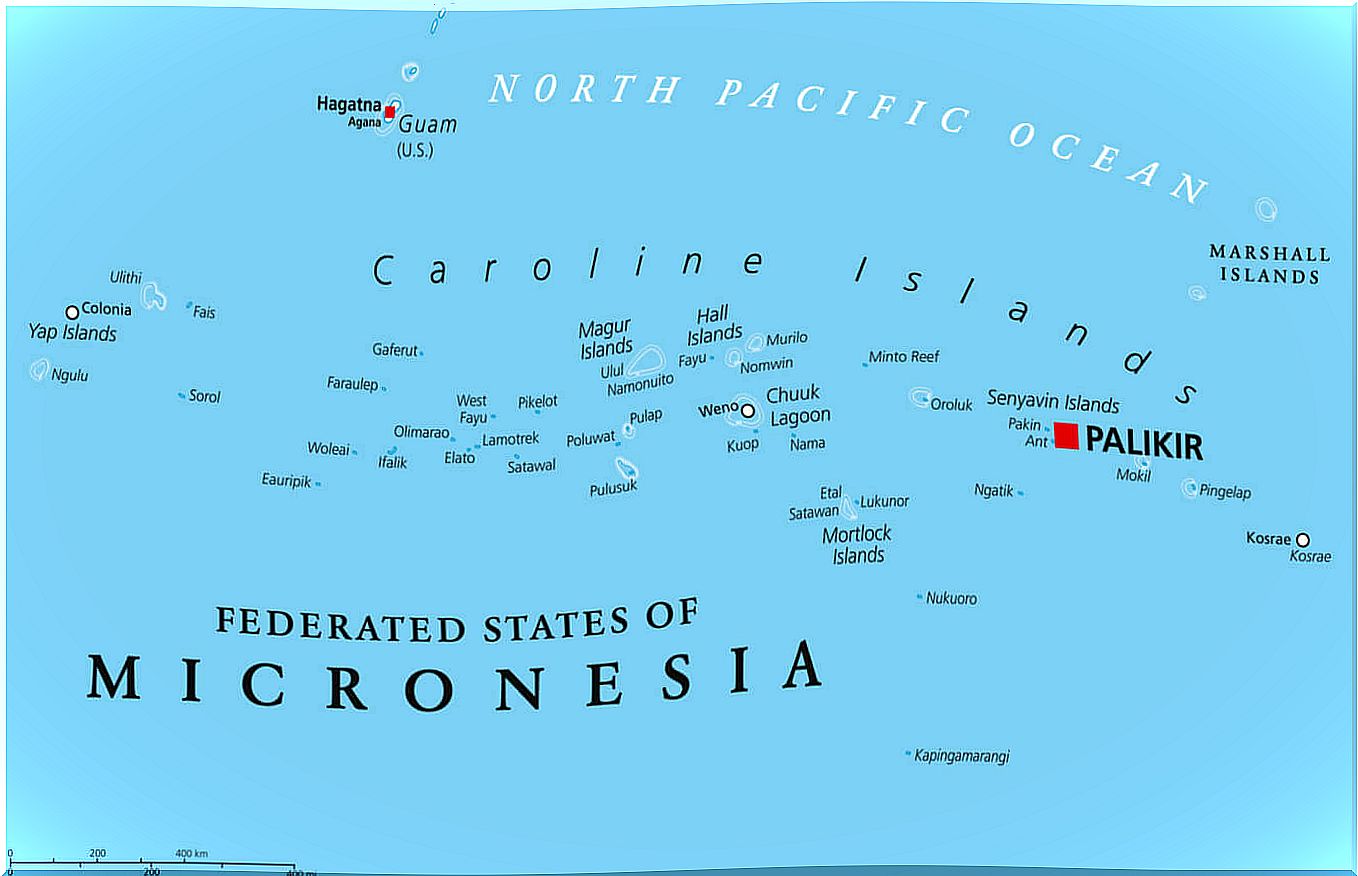
It was only until 1990 that the States of Micronesia gained recognition from the United Nations and thus apparent independence. Their sovereignty was tied to a series of treaties that they had to sign with the Americans.
An example of this is that in the four states of Micronesia there are no political parties and more than 65% of their economy comes from “economic assistance” from North Americans.
Some geography and society
Virtually all of the Federated States of Micronesia are atolls made up of coral reefs. Together, they settle on underwater mountain ranges and in innumerable cases they do so on volcanic formations.
The main economic activity in these states comes from subsistence agriculture and fishing. Despite its enormous tourist potential, it has little infrastructure.
In demographic terms, the population remains stable. Although 3% emigrate to have better opportunities, an equivalent percentage of new residents arrive in the country. This portion is basically represented by Americans, Australians and Europeans.
The “official” language is English within the main cities, while local dialects such as Ulithiano, Woleaiano and Yapés, among others, are spoken in the towns.
A curious fact about Micronesia
One particularly striking aspect that has made the island of Yap very popular is its stone money. These are huge limestone discs that have a central hole and can reach diameters of up to four meters and weigh several tons.
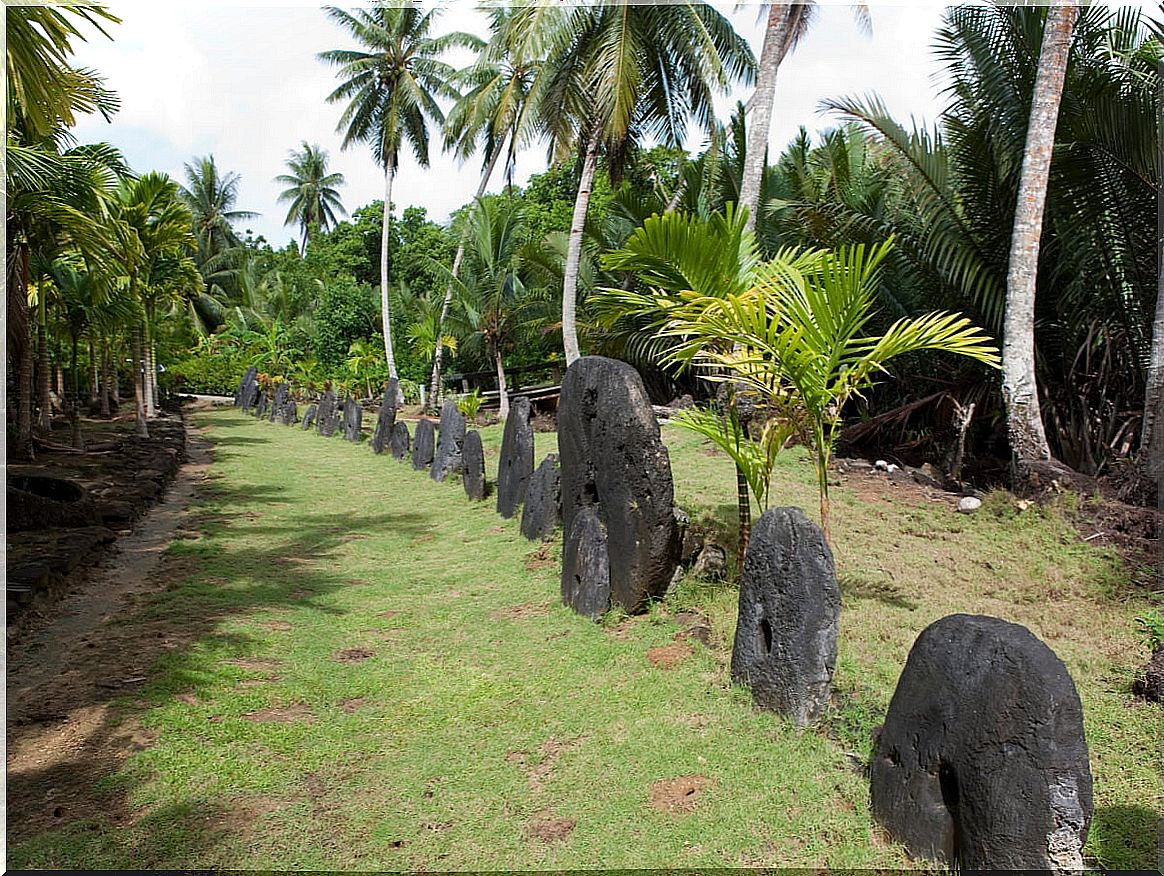
The smallest pieces have a diameter of 30 centimeters, so their value lies in the size, as well as the history they have. In the larger ones, what is transferred is the property, so the stone continues in the same place.
Most of these stones come from distant lands such as New Guinea and others from Palau. It is estimated that there are around 6500, distributed throughout the island of Yap.
Culture as the foundation
A fundamental aspect in the cultures of the Federated States of Micronesia is music and dance. Among the most traditional dances in the country is the palo dance, in which women, men and children participate. It is a ritual dance in which they confront threats to the community, from this world and beyond, with a stick.
In another dance, only women dance while sitting, which is associated with fertility, while other dances are only practiced by men or children. On the other hand, music is born of nature and serves as an instrument to get in touch with their ancestors, while allowing them to express their emotional universe.
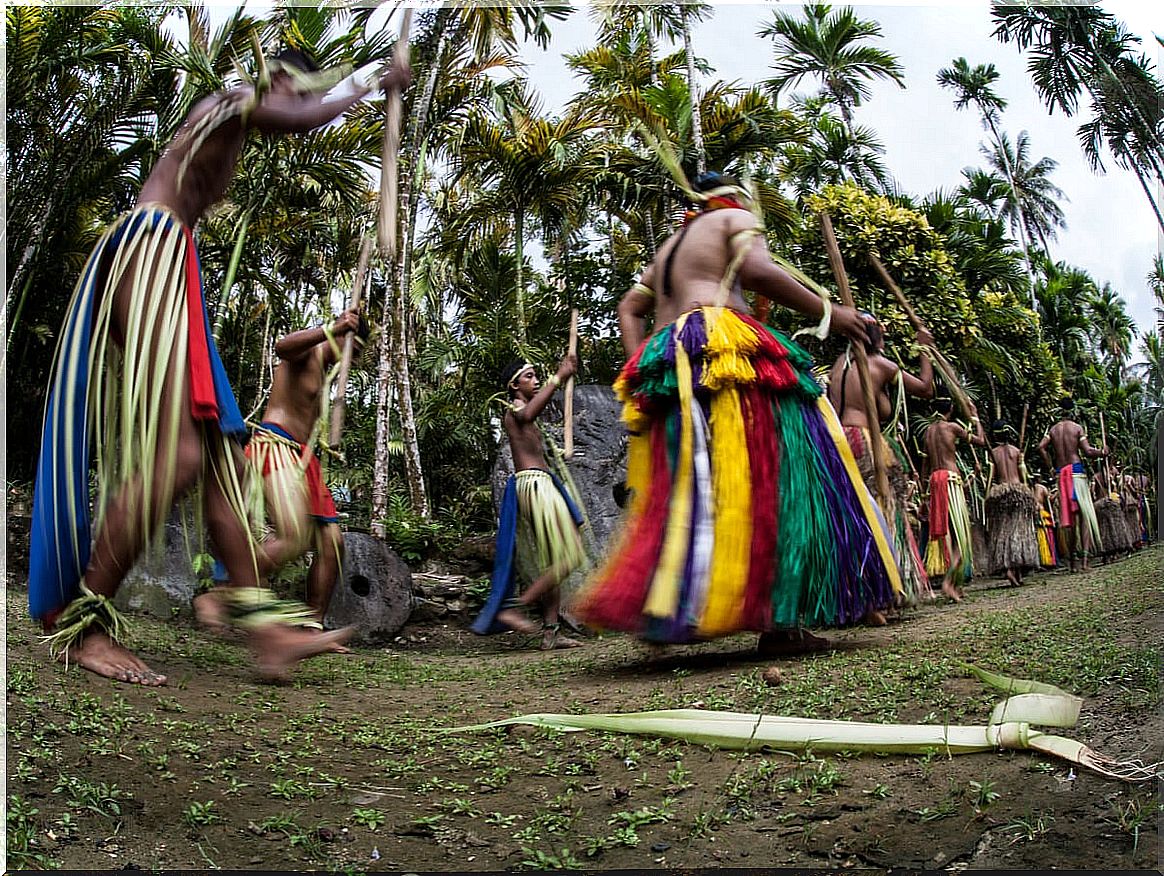
A deep-rooted ancestral tradition is wood carving, which originally had a religious or utilitarian function. Unfortunately, it has been contaminated by the influence of Western culture and its use is limited in many cases to decorative objects and souvenirs.
Basket weaving is also common, an artisan technique with which they make objects of all kinds. These crafts reflect the industriousness and creativity of their authors.
Micronesia and its exuberant nature
The Federated States of Micronesia present an impressive nature due especially to its geographical position, of a tropical character. This configures an ideal scenario of rainfall and constant temperature throughout the year.
Elevations such as mountains and volcanoes, arising from the depths of the sea, contribute to the particular characteristics of this region. Likewise, these favor the proliferation of coral banks, together with a numerous and varied fauna and flora. An example of this are the more than 1,300 different species of fish that can be found in the place.
